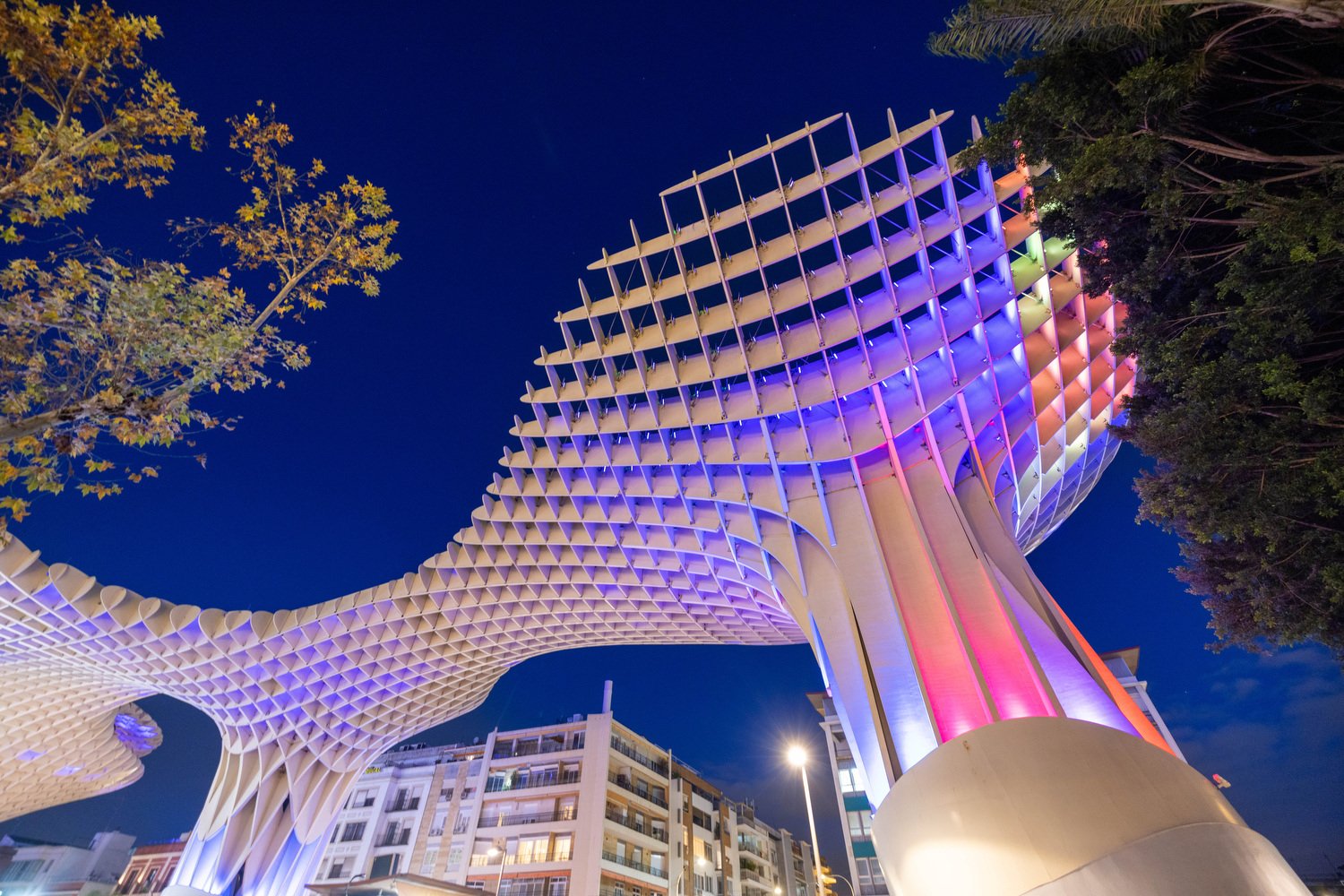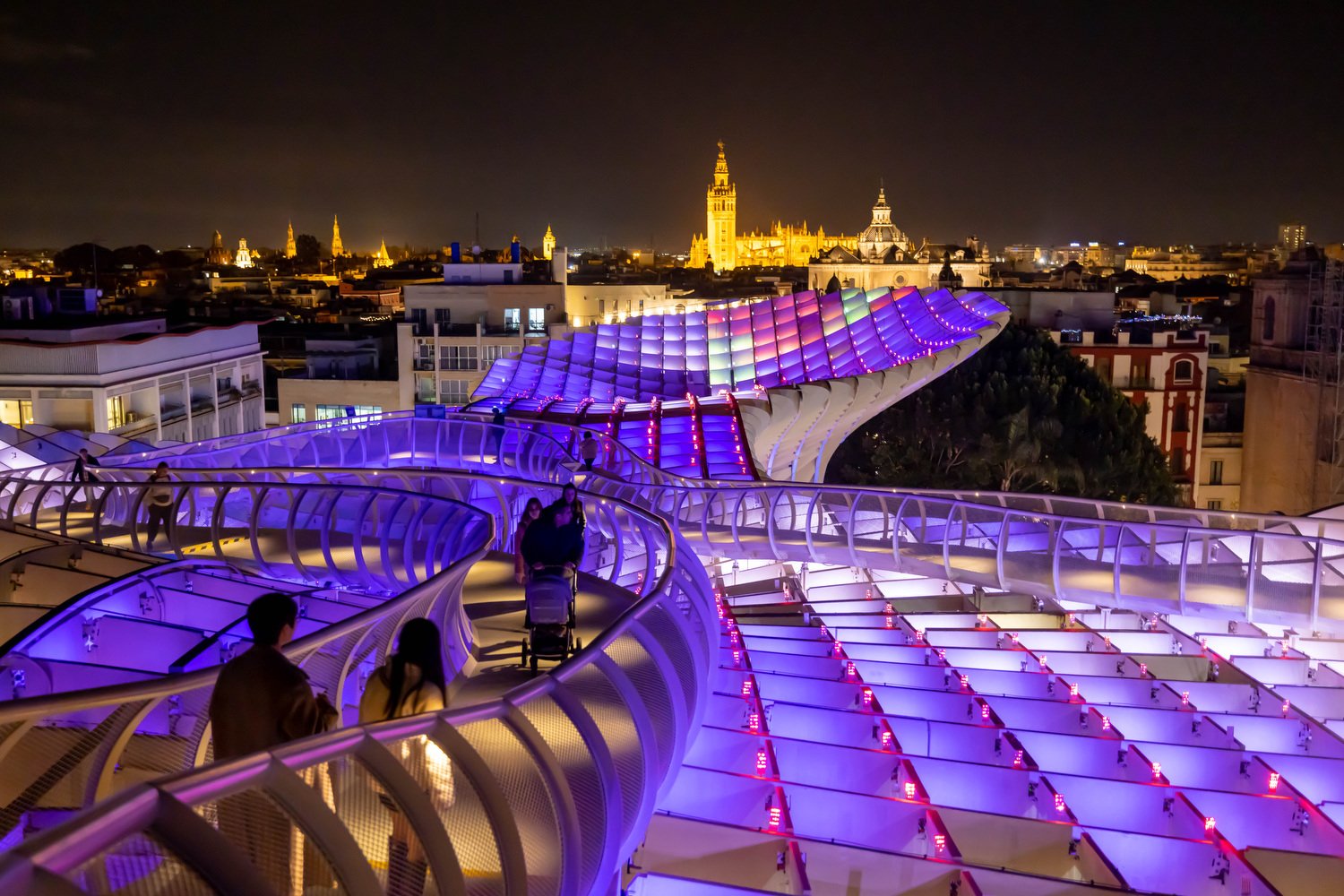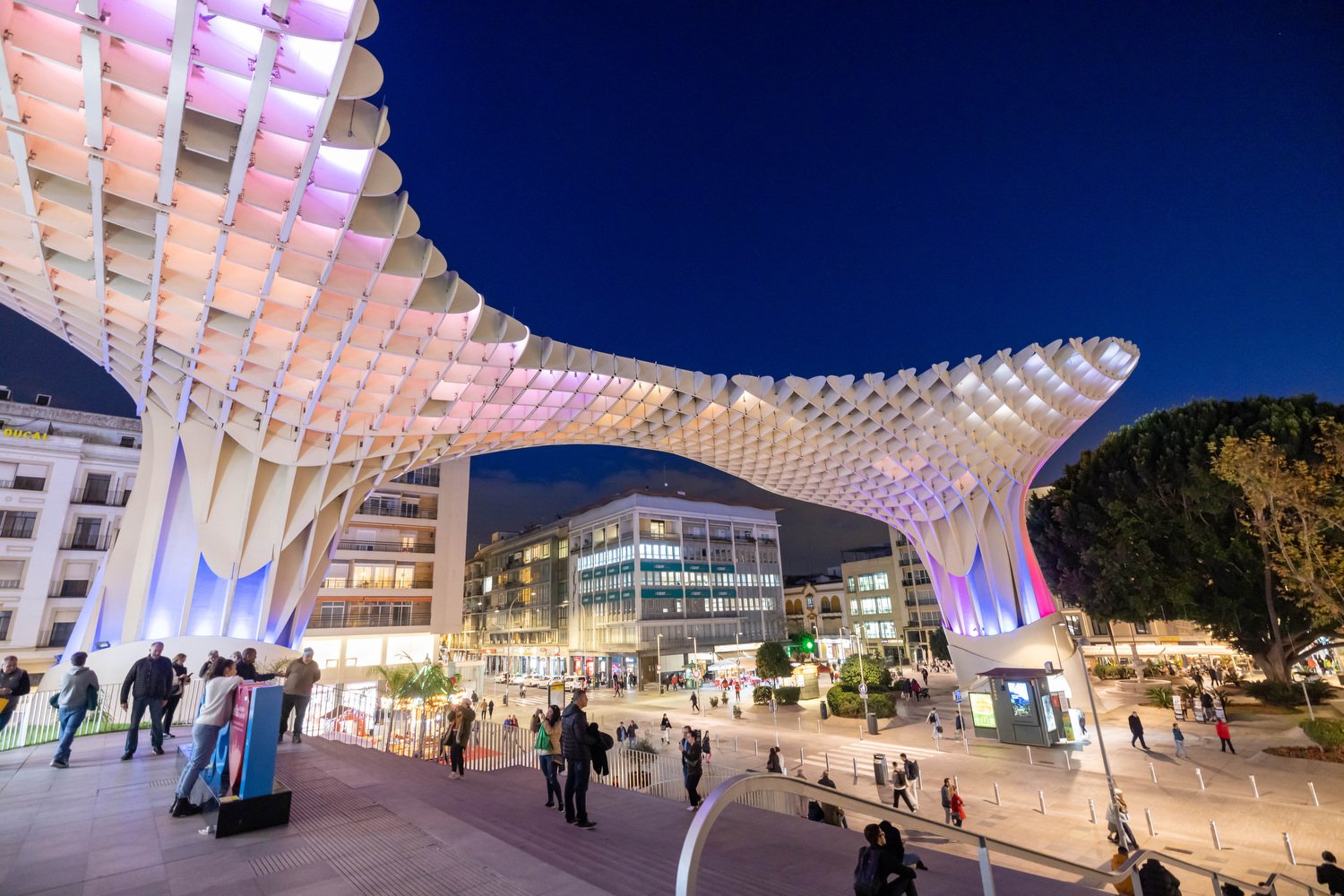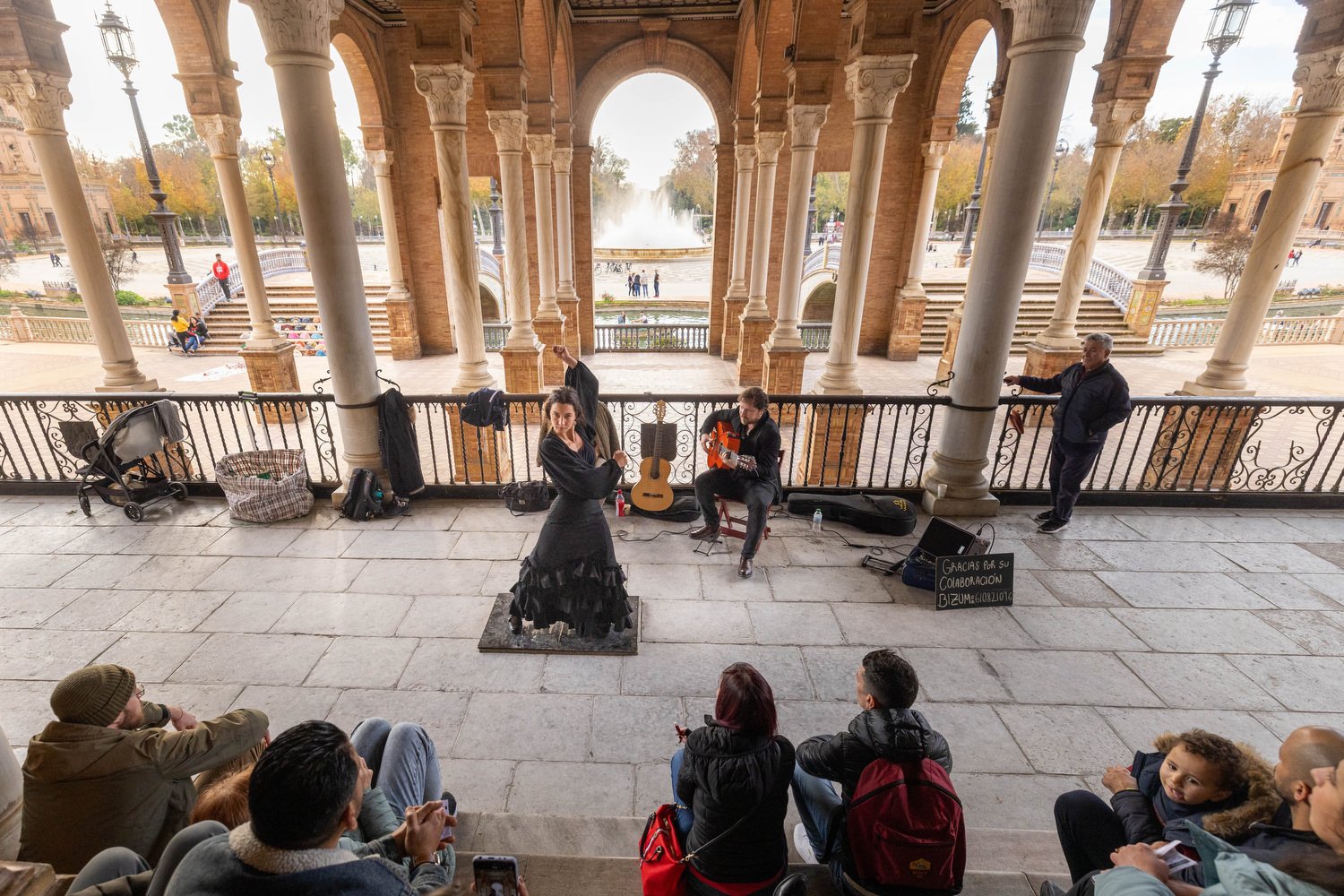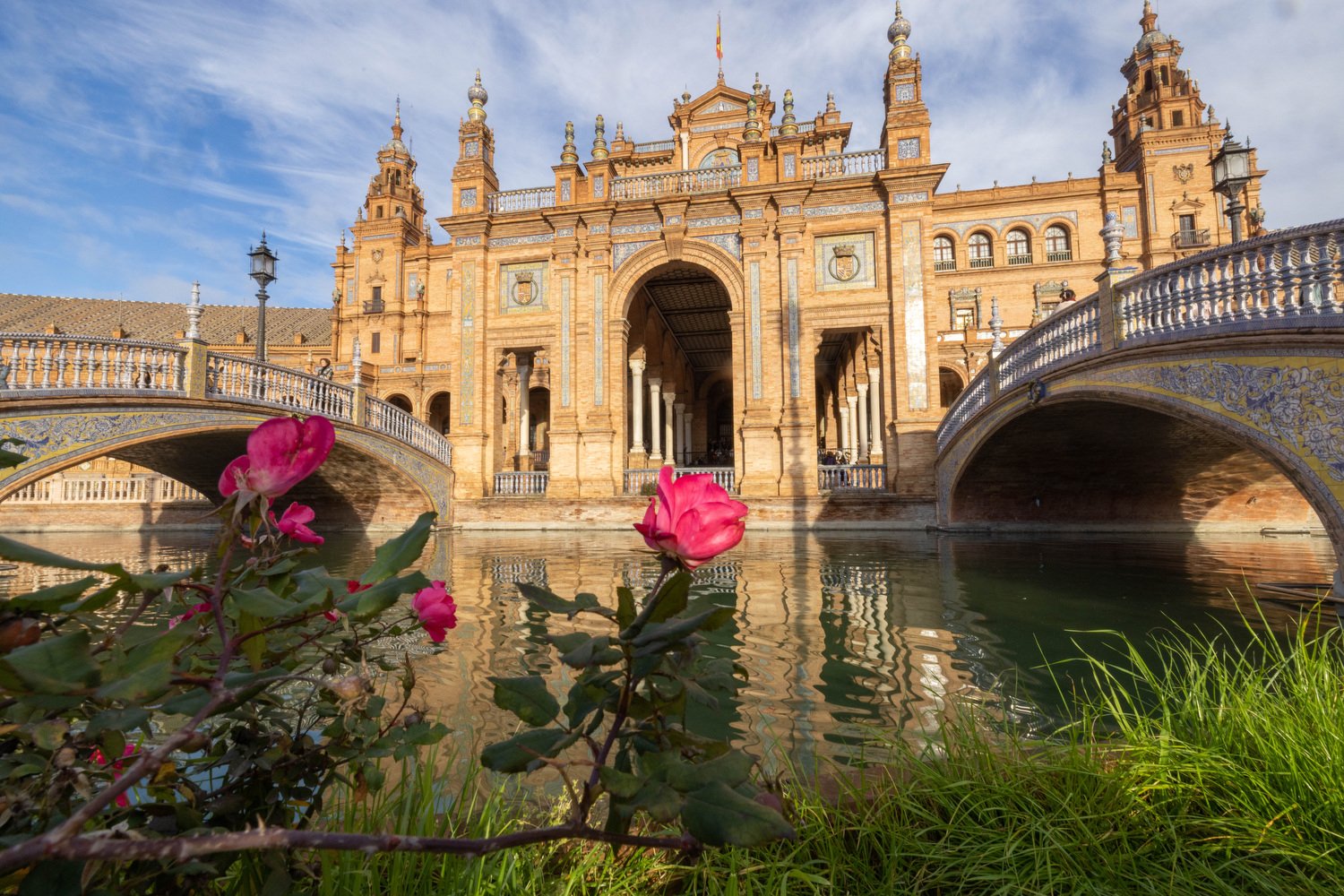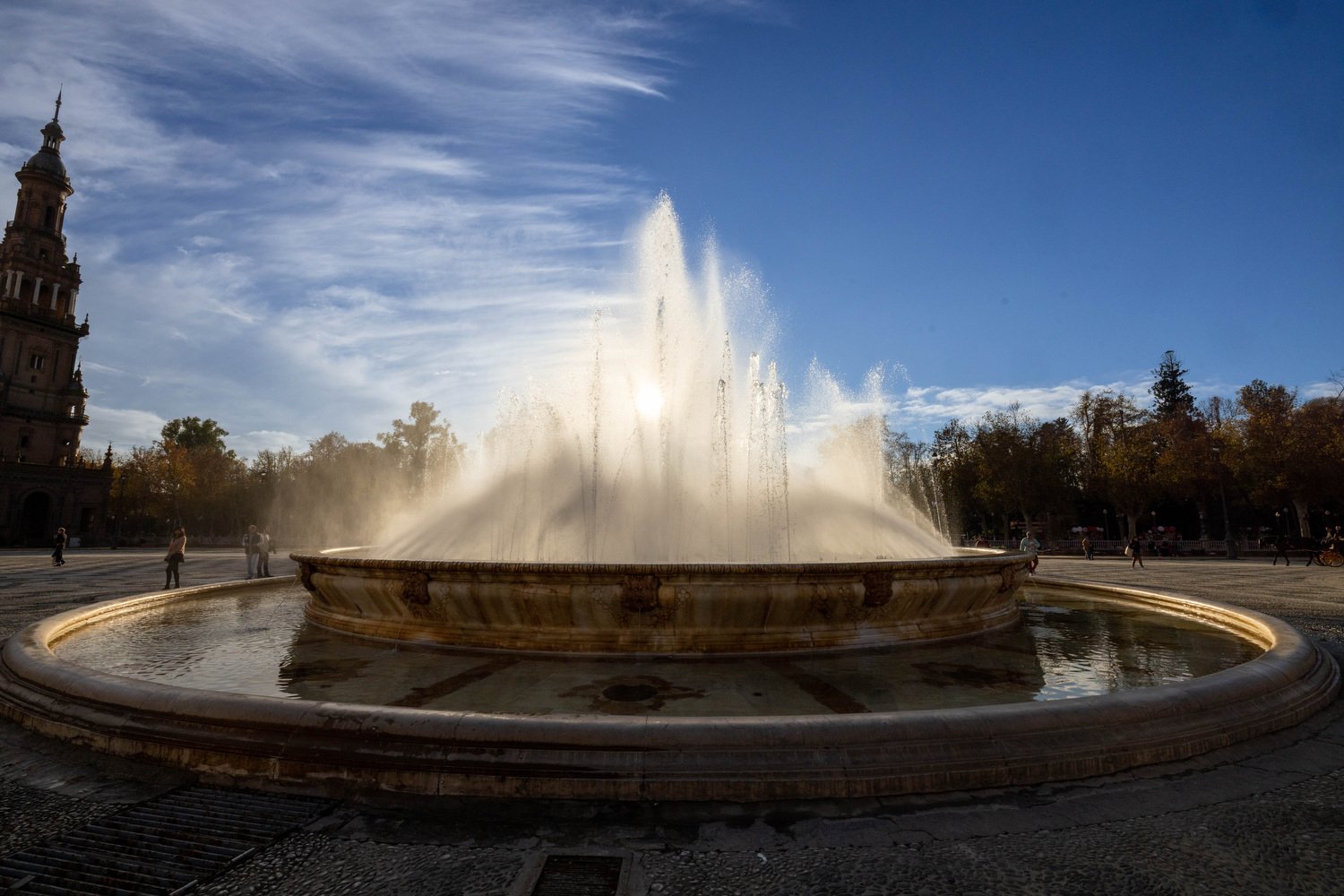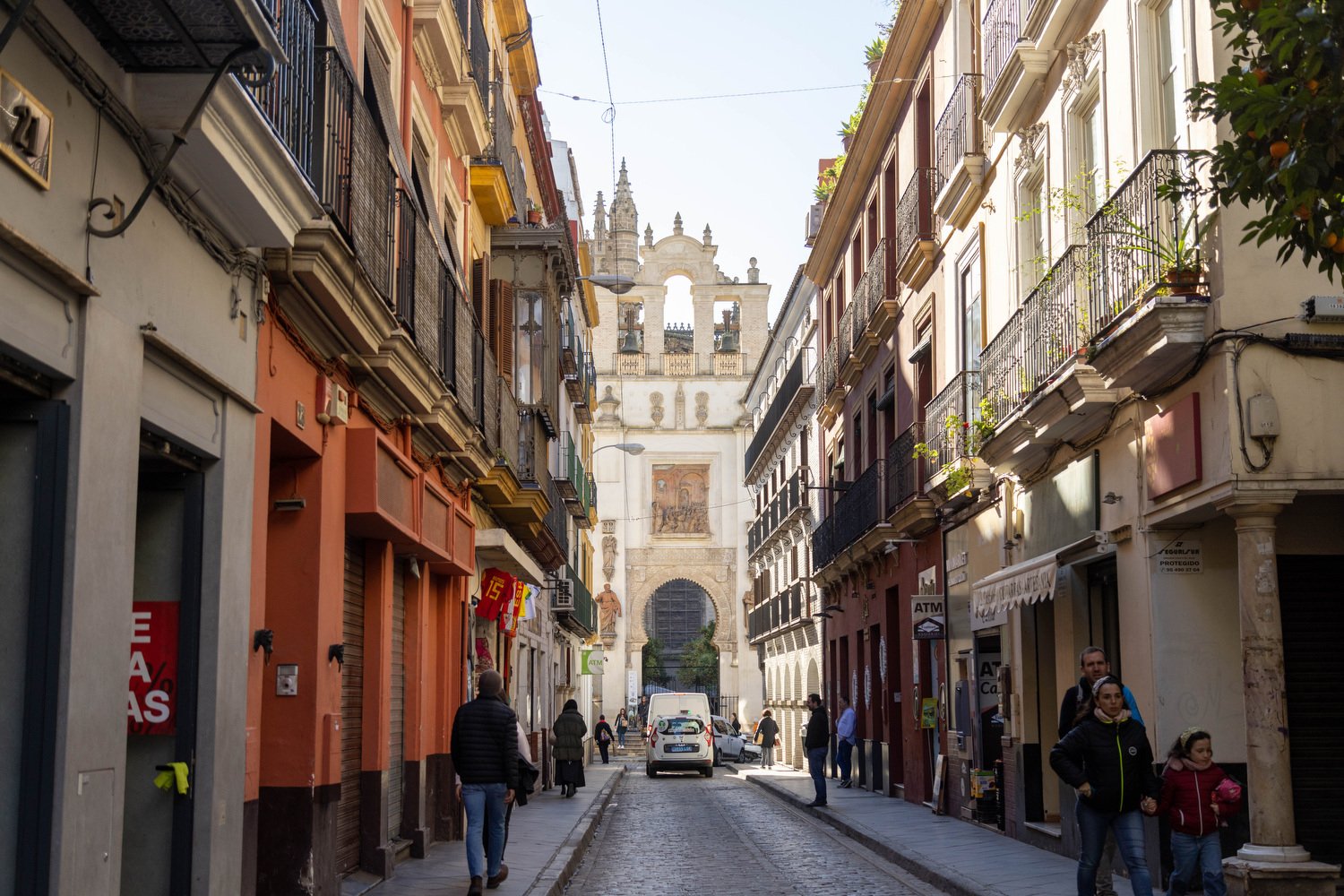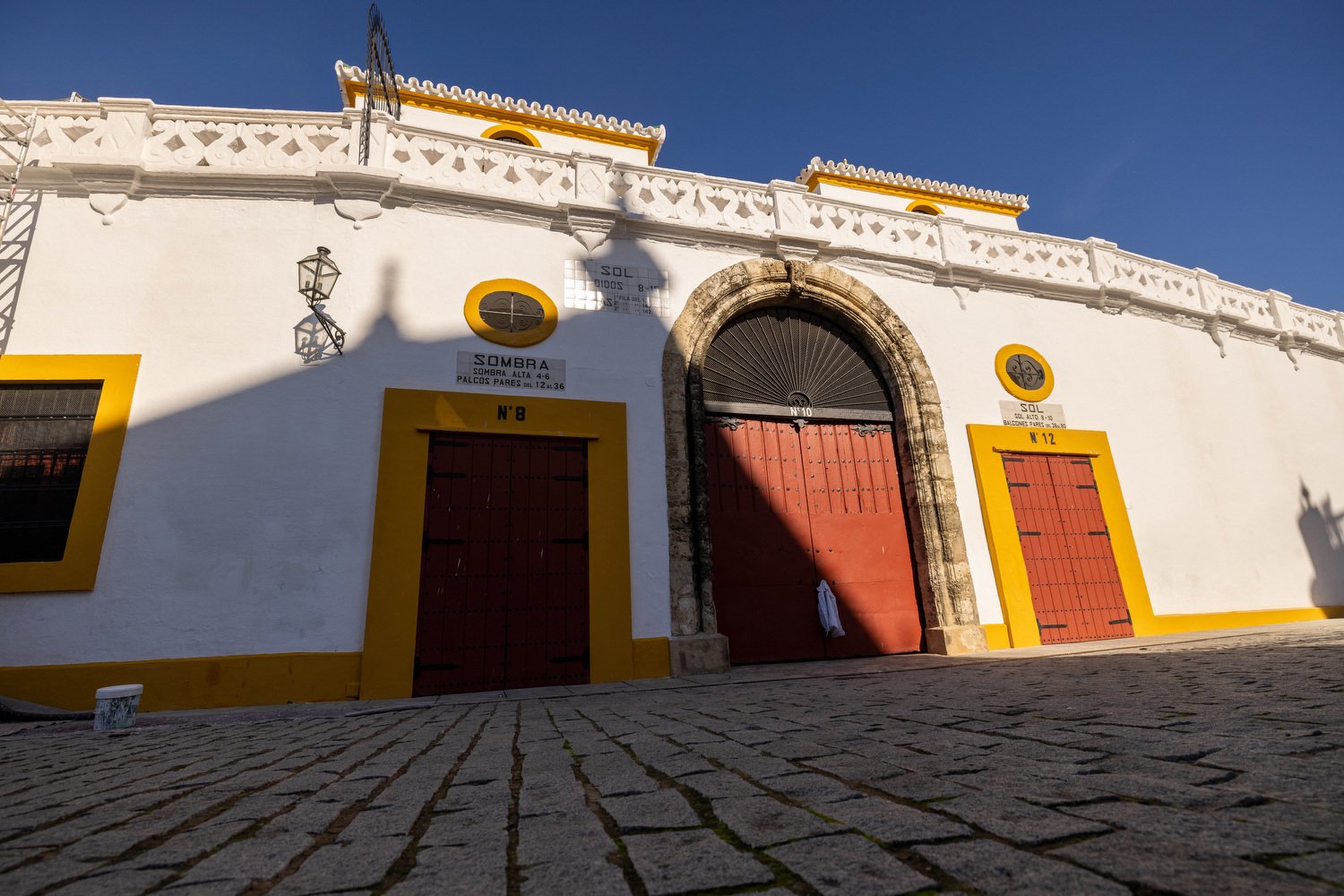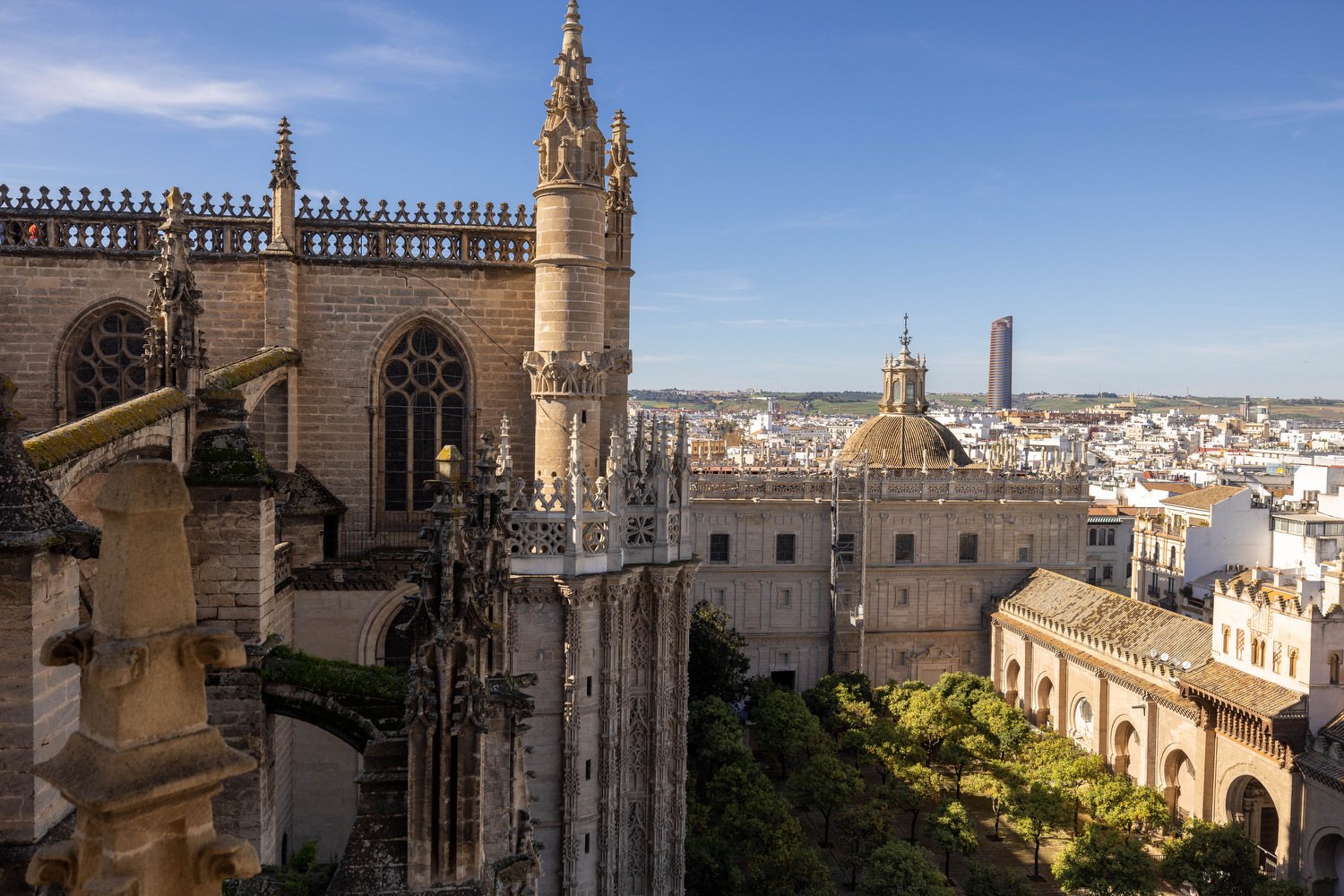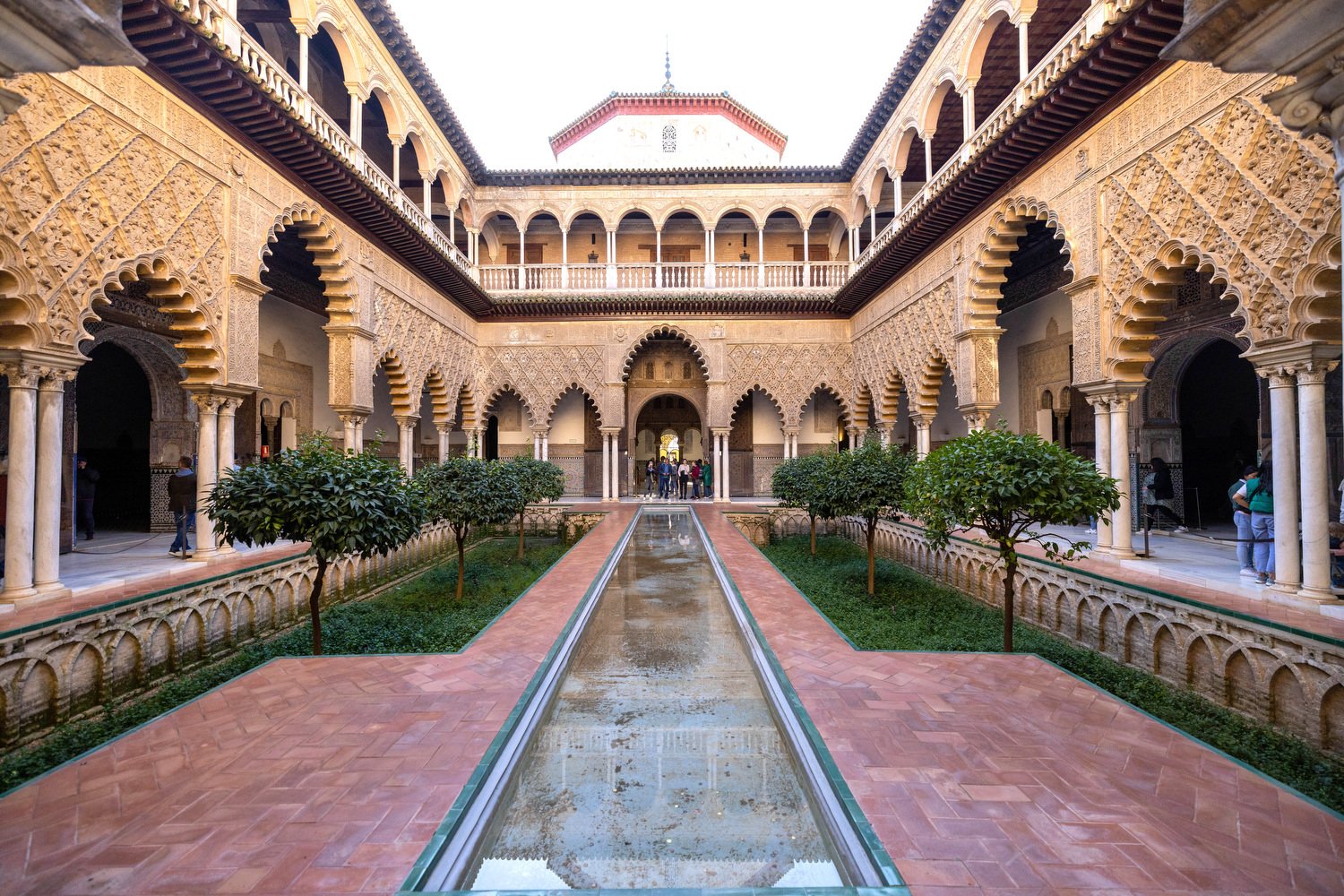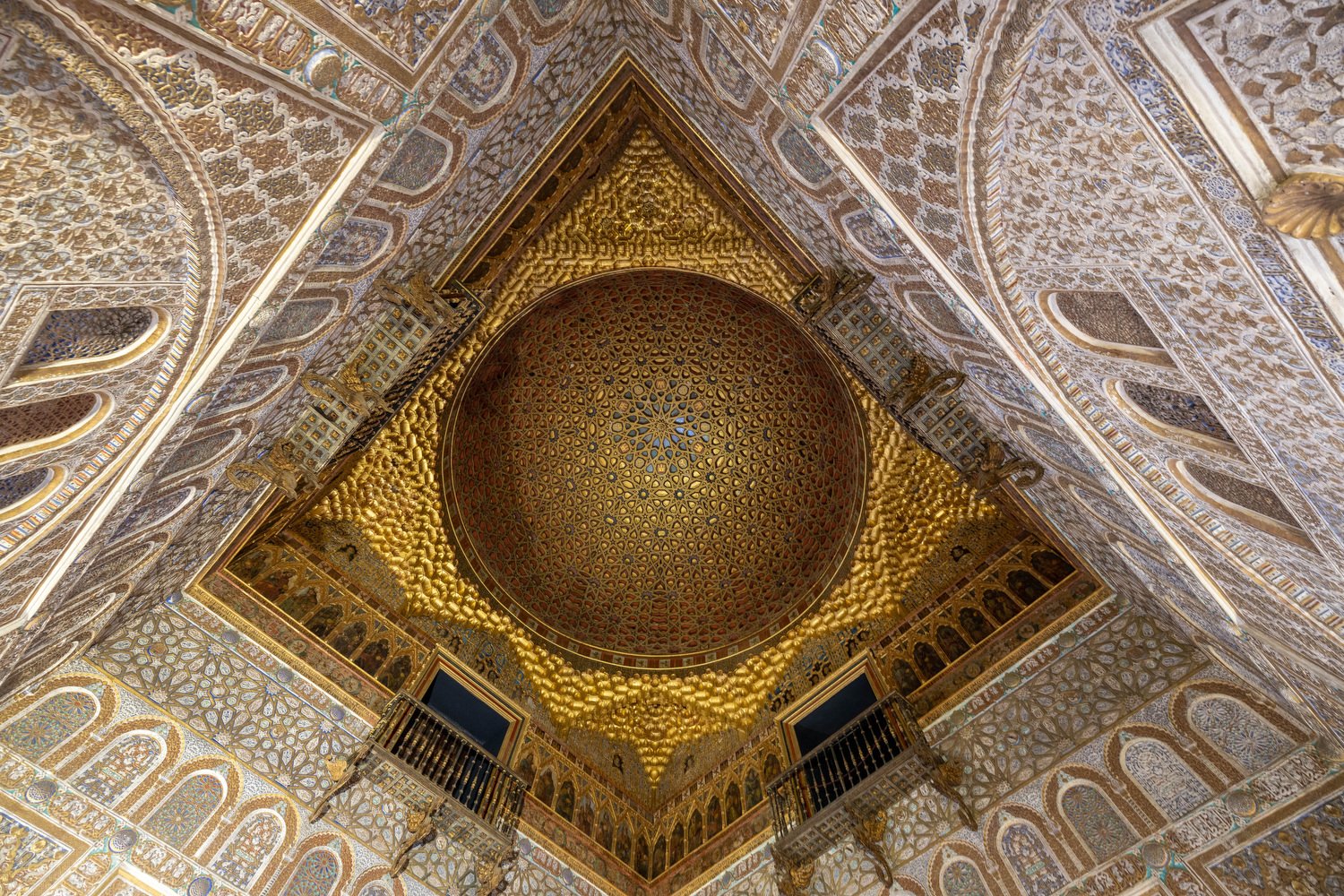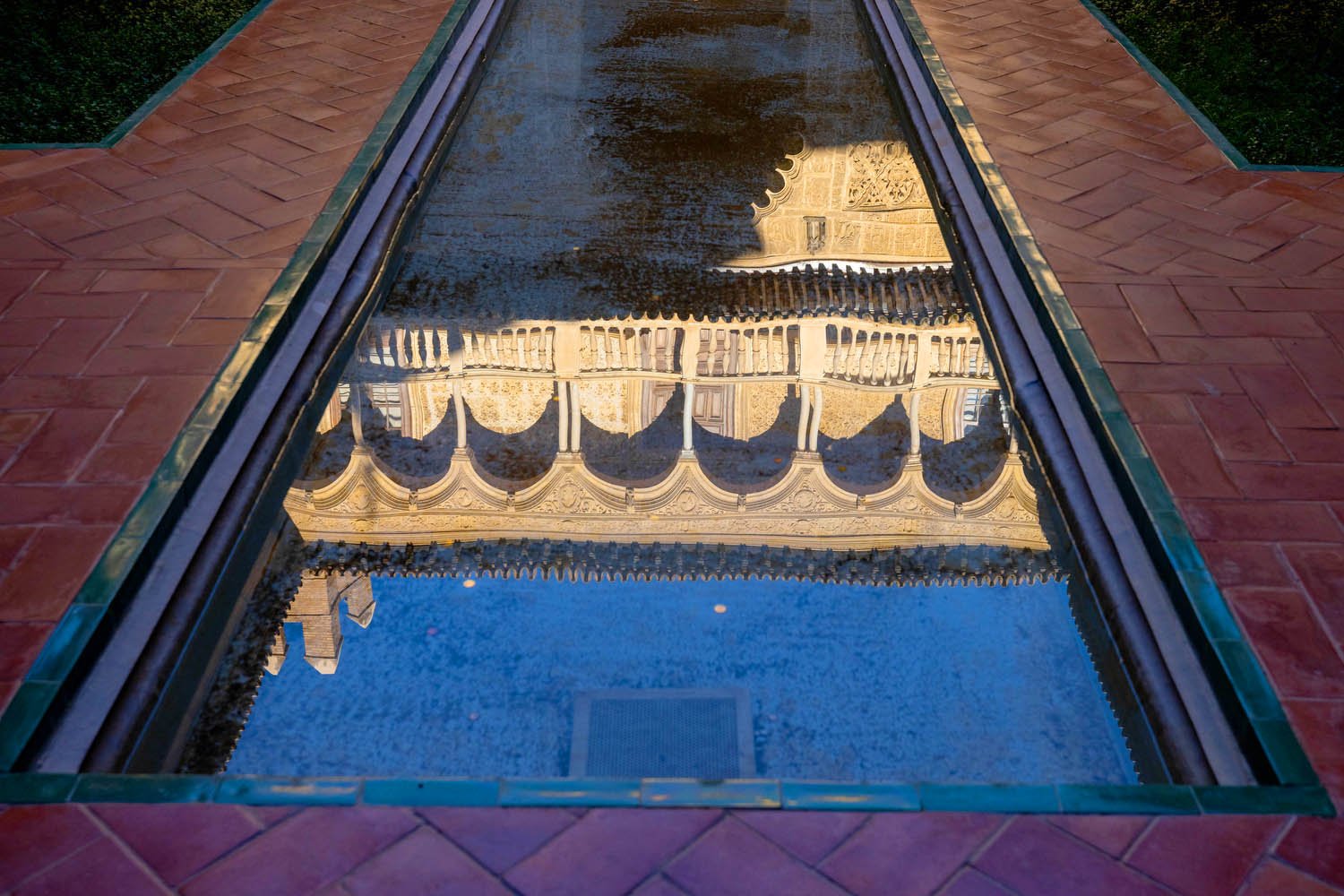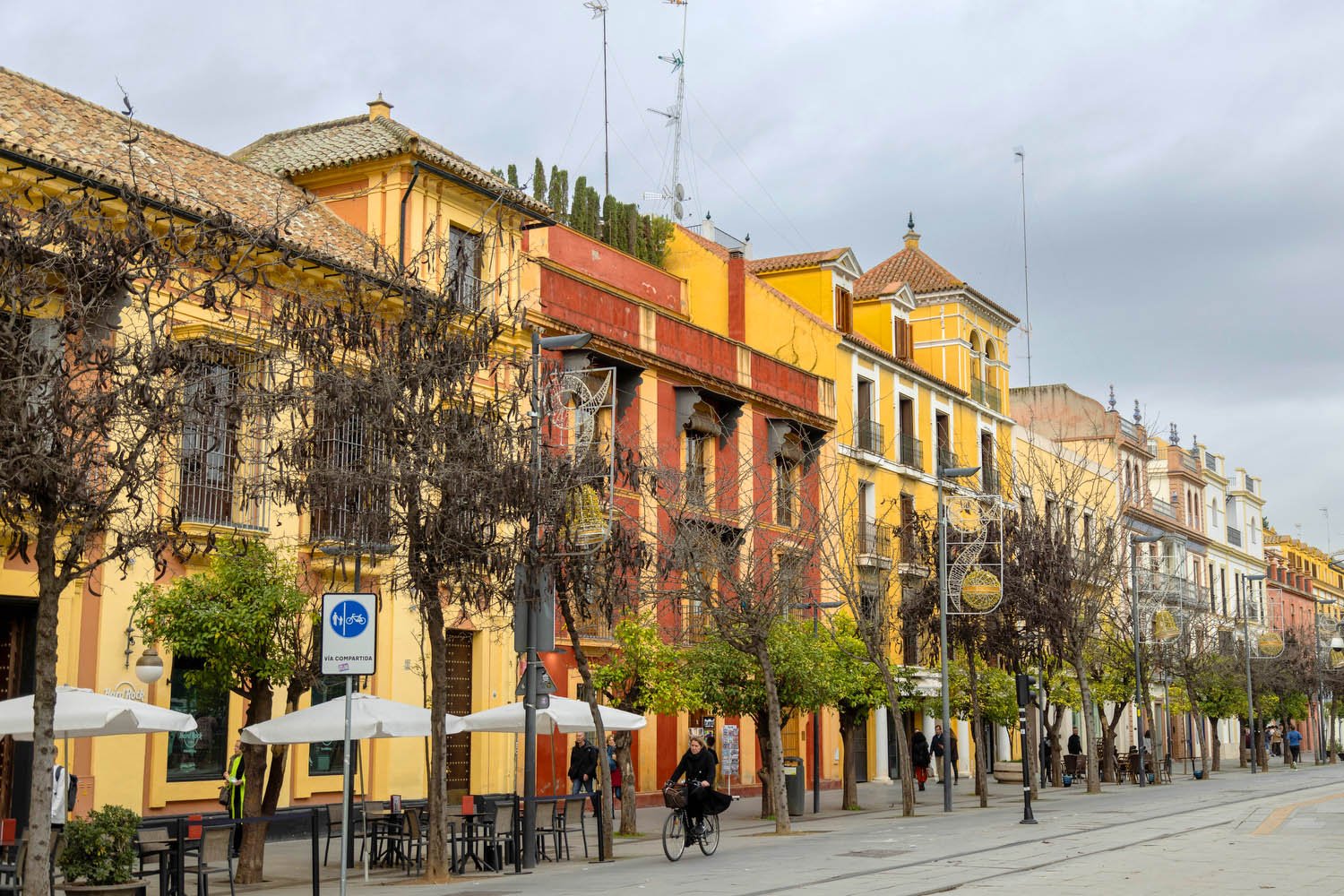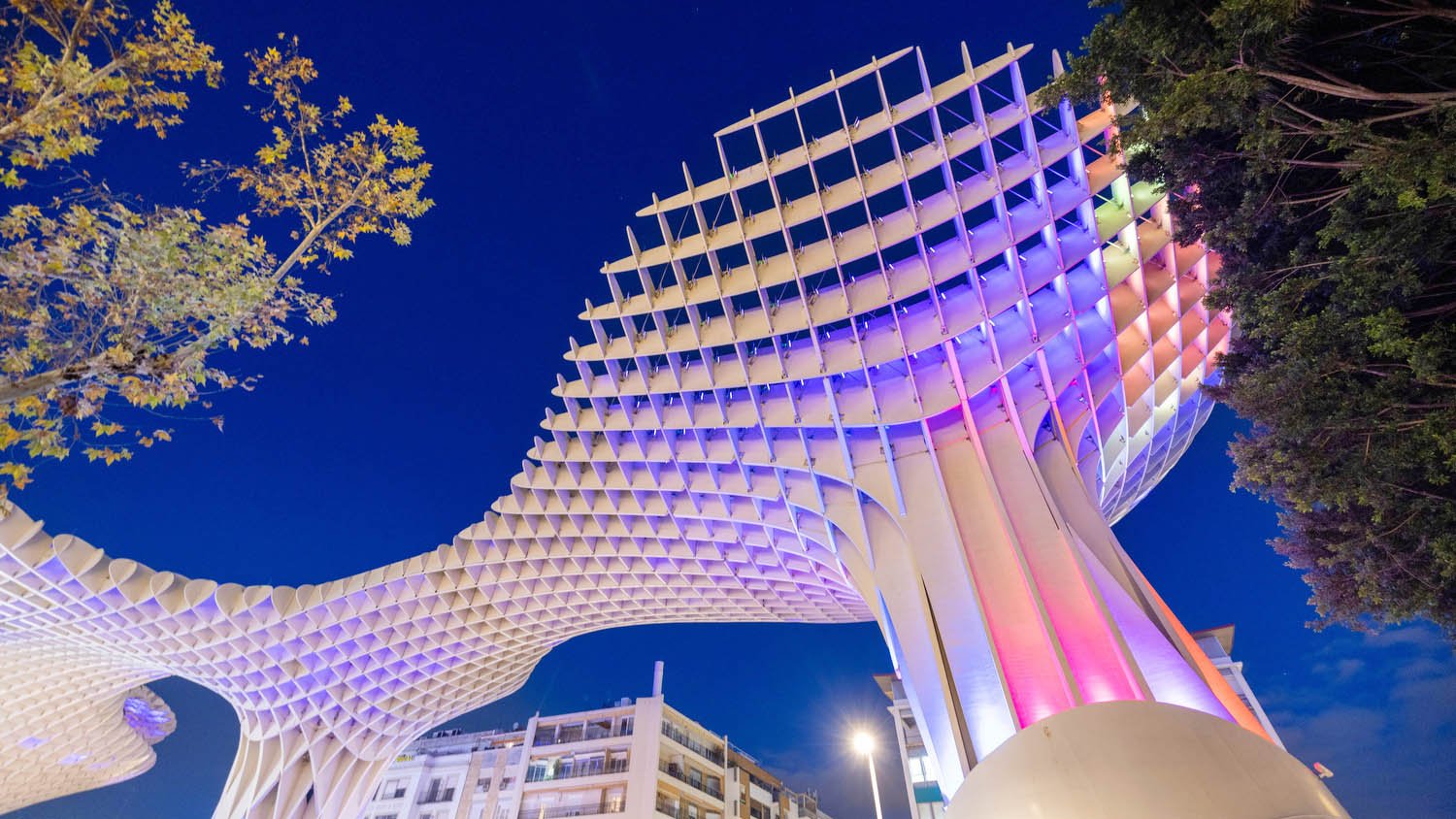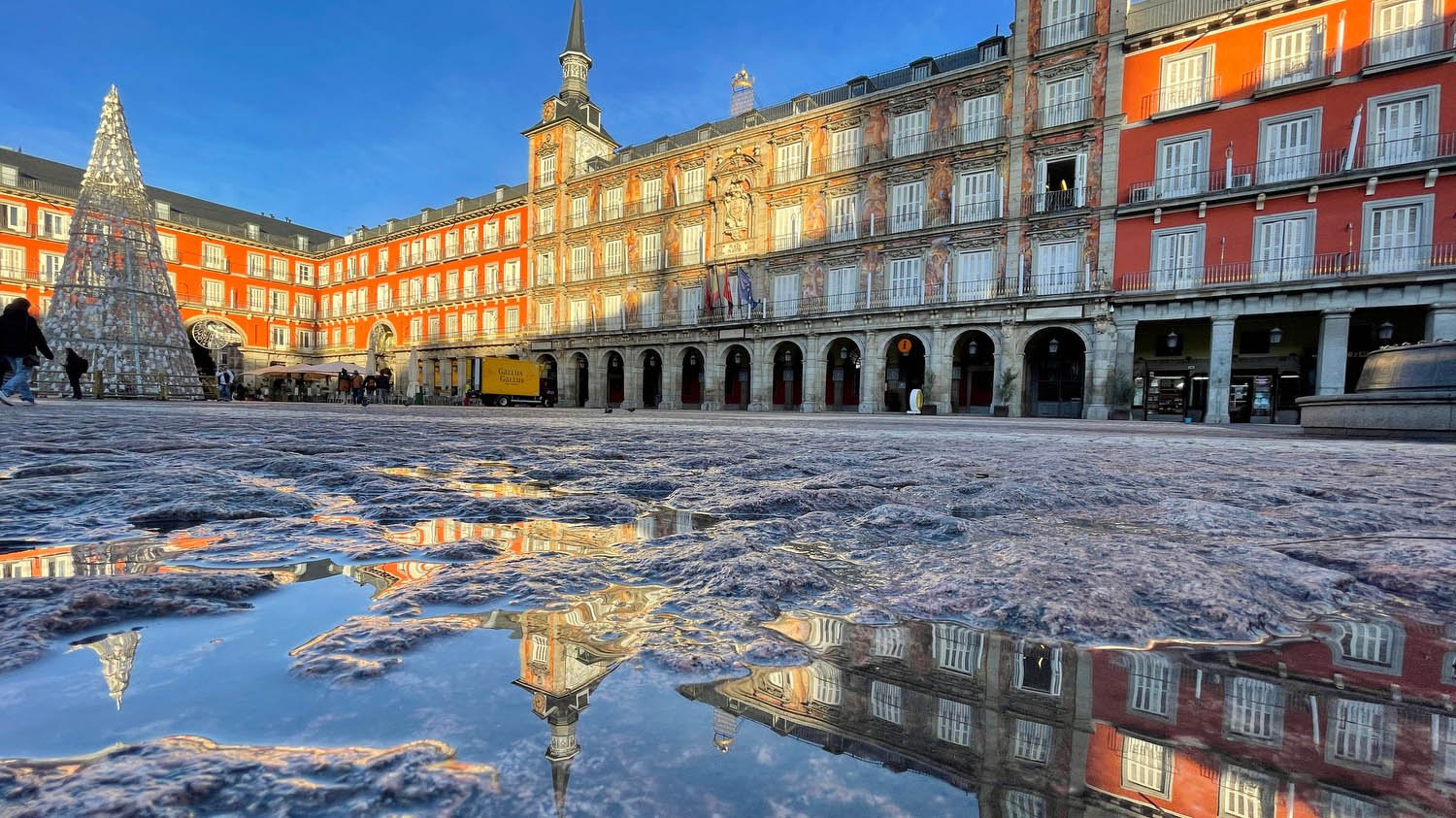2 days in Seville: a guide for first-time visitors
The view of Seville from the top of Setas de Sevilla.
The beautiful old city of Seville, affectionately known as “the sunniest city in Europe”, is less than three hours from Madrid via high-speed train.
This 2,200-year-old city has a rich history touched by many cultures, giving it a unique personality and a well-preserved historical center. It is a highly walkable city, despite being the largest of the Andalusia region and the fourth largest in all of Spain. The small village feel despite its size, the striking beauty of its colorful architecture and historical sights, plus the balmy weather it offers even in winter, make Seville a highlight of any trip to Spain.
On our first visit, we spent two days in Seville and got to see a lot of it in that time frame.
Here is what we did during our two-day visit and what we learned about lovely Seville.
Getting to and around Seville
We made use of Spain’s AVE high-speed train from Madrid to Seville and arrived at Seville’s Santa Justa station in under three hours. To get lots of great information about traveling by train in Spain, please check out our in-depth blog post How to travel by train in Spain.
Walking is a great way to experience Seville, as it is fun to explore its small colorful streets and take in the unique atmosphere. Most of the main attractions are on the east side of the Rio Guadalquivir River in the Old Town neighborhood. You can cross the whole city center on foot in about 45 minutes.
Of course, not everyone wants to walk everywhere and we all get tired sometimes! Fortunately, Seville has various transit options that include a metro line, an extensive tram system, and buses.
Seville has just one metro line, which makes it easy to navigate. It doesn’t actually pass through the historic center area, so it's not really the best option for sightseeing, but it’s a good way to get from one end of the city to the other. The line is split into three different sections, so the fare depends on how many sections you pass through.
We took advantage of Seville’s tram system, the MetroCentro. It is very modern and a nice way to get around to the sights when one doesn’t feel like walking, though it presently only serves 5 stops, and the same walk could be done in about 20 minutes.
A tram moves along a Seville street
There are ticket machines at the tram stops, but we did have a little trouble with them as they didn’t take a credit card, nor would accept a bill larger than €10. So that’s just something to bear in mind if you plan on using the tram.
We are FareDrop customers and love it, they send airfare sales for your home airport right to your inbox. It’s great!
Note - This blog post contains affiliate links. This means that if we are recommending a product, activity, or hotel, we might be receiving a small commission if you buy or book from these links. This is done at no additional cost to you. We only recommend products we have personally used or have thoroughly researched.
MetroCentro is run by TUSSAM (Transportes Urbanos de Sevilla, Sociedad Anónima Municipal), the municipal agency that also runs the extensive network of buses. These buses run throughout the city center, as well as to all the surrounding urban areas, making them useful if you are staying a little further out and are traveling into town daily.
We learned of a 3-day Tourist Card (Tarjeta Turista) that could be used for all the city transport, for one or three days. This sounded great, but unfortunately, we did not have success procuring it.
The attendant at the Metro Station had no idea what we were talking about when we asked, and the TUSSAM information center, which is supposed to sell them, wasn’t open, and the signage didn’t list the pass for sale anyway. So we gave up on that!
So put on your walking shoes in Seville, and make sure you have some smaller bills for the tram and you'll be A-ok!
For a more sporting experience, you can rent a bike using the Lime app or the city Sevici app. Short-term or long-term plans are available.
Flat and sunny Seville is one of Spain’s most bike-friendly cities. It offers 111 miles (180km) of smooth, interconnected bike lanes and the pleasant weather is perfect for biking. And the car traffic is calmer compared to bigger cities like New York or Rome
Guided bike tours are also a great way to see a city; a knowledgeable guide can add a lot to the experience.
Cyclists ride past the Seville Cathedral
Touring the Real Alcazar of Seville
One of the most interesting (and most popular) sights to see in Seville is the Real Alcazar, the well-preserved royal palace that spans centuries of Seville’s history, and is one of the oldest royal residences in the country. From North African Moors to the Spanish Christians of later centuries, Seville’s varied ruling cultures have left their mark on the palace, as the intricately tiled, carved, and decorated staterooms continue to showcase to this day. There are elaborate archways, tiled pathways that are centuries old, Mudéjar motifs, and beautifully green and textured gardens and courtyards that still look amazingly fresh and beautifully maintained.
One breathtakingly beautiful feature of the palace are the mysterious Baths of Doña María de Padilla. Consisting of a vaulted crypt with a cistern, divided into three naves, its seemingly infinite arches reflect into the water to create a meditative and stunning atmosphere in soft, filtered daylight that trickles in from above. The Baths have a bit of legend, intrigue, mystery, and romance to their story which makes them all the more interesting.
Baths of Doña María de Padilla, Seville.
Our favorite travel resources
Hotels - Booking.com. Lots of search options and information. Link
Activities - Viator. We love food tours and historical guides from Viator. Link
Airfare - FareDrop. Custom notifications of airfare sales. Link
Phone connection - Airalo. E-Sim for your phone, it’s easy and available for every country. Link
Europe train travel - Trainline - We use it to book all our train reservations. Link
Note - This blog post contains affiliate links. This means that if we recommend a product, activity, or hotel, we might receive a small commission if you buy or book from these links. This is done at no additional cost to you. We only recommend products we have personally used or have thoroughly researched.
You are sure not to miss the Baths on any guided tour of the palace. This is the exact kind of attraction that we usually like to book a tour for. You just get so much out of historical places like the Real Alcazar with an informed guide.
We opted for the Alcazar and Cathedral of Seville Tour with Skip the Line Tickets through Viator.
It was an excellent tour as it combined the Real Alcazar and the Cathedral of Seville in one ticket, and although it was quite long (almost 4 hours!) to be on one’s feet, it was very in-depth and we had an extremely well-informed guide who knew every story and drew us into every painting and artwork.
After the long day exploring the Real Alcazar, we totally appreciated a snack break at a small cafe in the gardens, where we sipped cappuccino and enjoyed the company of peacocks, which felt somehow like distinctly royal little beggars!
Book the tour that we enjoyed of the Real Alcazar and Cathedral of Seville here.
Visiting the Cathedral of Seville
The Cathedral of Seville (rear), at night.
The Catedral de Santa María de la Sede (The Cathedral of Saint Mary of the See), otherwise known as the Cathedral of Seville, is one of the largest cathedrals in the world, after St. Peter’s in Rome and St. Paul’s Cathedral in London, as well as the largest Gothic cathedral in the world. It can only be described as monumental.
One can get a bit of “old church fatigue” when visiting Europe, but the sheer size of Seville’s grand old cathedral and the wealth of artistic and historic treasures here make it one not to be skipped (even with a skeptical 21-year-old in tow). Its mixture of Gothic, Renaissance, and Moorish architecture is truly Sevillian in style.
We opted for a guided tour to best appreciate what the cathedral had to offer. Our tour was a combined ticket that included both a tour of the Real Alazar and the Cathedral of Seville in one tour, and although quite long, it was very worth it.
You can also opt to pick up an audio guide at the entrance.
The Cathedral houses an astounding collection of artifacts, artworks, and points of interest. Some of the highlights are the Tomb of Christopher Columbus, (is it actually his final resting place? Debatable!); Ogle Francisco de Goya’s painting Santas Justa y Rufina, the martyrs who are the city’s patron saints; the oval-shaped Chapter House with its elaborate domed ceiling and paintings by Seville native Bartolome Esteban Murillo; and the dazzling Gothic altarpiece of the main chapel (Capilla Mayor) featuring gilded wood carved scenes from the Life of Christ and the Life of the Virgin, created in a day when many people could not read, so they followed the story in these beautifully carved pictures.
View of Seville from the Cathedral Tower.
One of the most interesting and memorable experiences of our Cathedral visit was climbing the Giralda Tower, the bell tower of the Cathedral, and one of the architectural emblems of the city. The Cathedral is built on the site of a mosque, and while Spanish Christians transformed the city’s 12th-century mosque into a cathedral between the 15th and 16th centuries, somehow they couldn’t bear to destroy the minaret, so they incorporated the tower into the cathedral design, and it still displays this Moorish ancestry today.
Climbing the Giralda is a unique experience because instead of stairs, it was built with a series of 35 winding ramps. This was because someone had to climb the tower several times a day for the Call to Prayer, and it was determined that riding a donkey up and down the tower was easier!
The Christians installed 24 bells at the top of the tower, one for each of Seville’s parishes and for the 24 knights who fought alongside Ferdinand in the reconquest. These massive bells are an impressive sight and make the climb very worth it! And, of course, the 360-degree views of the city from the top are as stunning as one might expect.
Since the Cathedral is so huge, the amount of tourists it attracts isn’t really a problem, but you may have to queue up to climb Giralda. Fortunately, we were able to skip the line with our tour ticket, but if going on your own you might want to schedule this early in the day to better negotiate the line.
Book the tour that we enjoyed of the Real Alcazar and Cathedral of Seville here.
University & Royal Tobacco Factory of Seville
Students walk through the Seville University campus
While exploring Seville, definitely take a walk through Seville University and take in its stunning architecture. Being New Jerseyans and familiar with the likes of Princeton University campus, we totally appreciate that a stately old academic institution might house architectural marvels, but what makes the University of Seville unique is that it was once the Royal Tobacco factory.
It’s pretty astounding to think the original builders of the Real Fábrica de Tabacos de Sevilla took the time and effort to create such a beautiful home for a factory, but I guess when built by royal decree in the 1700s, that’s what happened. This enormous neoclassical building provided room for more than 10,000 employees, most of which were female. Most famous of the employees was Carmen, known from the opera of the same name by the French composer Georges Bizet.
The tobacco factory complex housed 116 mills for tobacco production and stables for 400 mules that propelled the grinding system. It also contained its own prison, nursery, and courthouse. I guess they took their tobacco seriously!
The factory became part of the University of Seville in 1949. While the inside of the building has been updated to be part of a functioning university, the outside still provides an authentic atmosphere that you can enjoy for free. I imagine it’s an inspiring place to study as well!
The Real Fábrica de Tabacos de Sevilla is located at Calle San Fernando, 4 Seville.
It’s an easy walk from Real Alcazar or via Metro, Tram Puerta de Jerez or Prado de San Sebastián (T1).
Visiting Plaza de España and María Luisa Park, Seville
Plaza de España
The impressive and colorful Plaza de España - or The Spanish Steps in Seville - is the most famous square in Seville. It was designed as part of the Ibero-American exhibition of 1929, which was created with the goal of making symbolic peace with former American colonies. Built in Spanish Renaissance style and with a diameter of 200 meters, it’s a spacious, comfortable, and romantic place to just hang out and enjoy the day.
Plaza de España is located next to Maria Luisa Park, (Parque de Maria Luisa de Sevilla) the most famous park in Seville. Originally the gardens of San Telmo palace, the space was donated to the city of Seville in 1893 and now is a large and verdant public park. We walked through Maria Luisa Park to get to Plaza de España. Even in January, it was lush and green, full of birds and shady spots.
You can’t help but be taken by the charm of the square. It feels uniquely Spanish - colorful, richly textured, lively, and fun. The square underwent a huge renovation in October 2010 and is enjoyed by locals as well as tourists.
The Empty Nest Explorers and Anakin Skywalker and Queen Padmé Amidala at Plaza de España.
The row of stylized government buildings that make up Plaza de España forms a semicircle, flanked by two tall towers. Immediately you’ll notice the 52 benches tiled with brilliant mosaics located at the foot of the building on the Spanish square. These 52 frescoes depict all 52 provinces of Spain and are made up of azulejos, traditional Andalusian tiles. Spanish tourists visiting Seville often pose with their own province.
As we arrived in the late afternoon on a brilliantly sunny midwinter day, the entire scene seemed to glisten, bathed in rich blue and golden tones. A large fountain in the middle of the plaza sparkled and splashed as families strolled, horse carriages clopped along and music played. A prominent canal, accented with charming little bridges, created a picturesque atmosphere. Boats are available for rent for paddling along the canal.
Star Wars fans may recognize the distinct architecture with its many archways as the setting for the fictitious Theed Palace on the planet Naboo, where the romance between Anakin Skywalker and Queen Padmé Amidala blossomed in Attack of the Clones. (Ok, we just might have had a little fun recreating the scene of them walking through the colonnade!)
We also watched a lively flamenco performance on the shaded steps, accompanied by traditional guitar music. This is a regular sight at the Plaza. Flamenco dancing is closely associated with the country as a whole, but its birthplace is Seville, so it's the perfect city to take in a show.
There are public bathrooms available at Plaza de España; they cost €.60 but don’t give change.
Plaza de España is open all day and free to enter. Metro stop - Prado de San Sebastian (line 1)
If flamenco dancing caught your attention, you can check out Flamenco Show Tickets to the Triana Flamenco Theater here.
A flamenco dancer performs at Plaza de España
Setas de Sevilla (Metropol Parasol), ‘The Mushrooms of Seville’
Located in the Plaza de la Encarnación, Metropol Parasol, also known as the 'mushrooms of Seville' ('Las Setas de Sevilla') was opened in 2011 and designed by German architect Jürgen Mayer, who won a competition that was part of revitalizing the square. Mayer’s design integrates the remains of a Roman colony into his structure. Originally, a parking lot was to be built here, but that idea was quickly abandoned when the Roman remains were discovered. It is said to be the largest wooden structure in the world.
The six giant “mushrooms” of Metropol Parasol shade the square, and on top of the structure, there is a special walkway and a terrace (the Mirador de las Setas, or “Mushrooms Viewpoint”) with impressive views of the city from the 29-meter-high vantage point. Inside Metropol Parasol there is an archaeological museum, Antiquarium, located 5 meters below street level that houses the remnants of the Roman colony. There is also a market, and several bars and restaurants. We have a soft spot for aerial vistas so going up top seemed to be the thing to do.
Setas de Sevilla at night
It costs more to go up in the evening (and at €15 apiece it’s frankly a bit steep) but the very unique experience is much better at night when you can enjoy a show of brilliant colored lights as you take in the sweeping views of the city. There is an elevator up and a choice of either stairs or the elevator down. We didn’t have any trouble with queues in January; we purchased tickets at the door, but it's probably better to book ahead for a summer evening.
It feels a bit touristy, but it is a nice experience and gives you the excuse to mosey into the Plaza de la Encarnación, which is a bustling neighborhood somewhat recently revitalized with some nice restaurants and fun activities in the streets.
To reach Plaza de la Encarnación and Metropol Parasol via Metro, take Line 1 (walk 800 meters from this square to the metro station) or bus line 27 or 32
To book tickets online, visit https://setasdesevilla.com/en/buy-tickets#scrollEntradas
The orange trees of Seville
One of the first things you notice in Seville is the proliferation of orange trees. They line every street, shade every square and add a pop of color and charm everywhere you look. Of course, orange trees are pretty common all over Spain, but in Seville, they are particularly prolific and are almost a local character all on their own.
It was mid-January when we visited and the trees were laden with fruit. It seemed odd to me that no one seemed to be pilfering them - no human or animal seemed much interested. As I can’t keep raspberries for a day in my own garden as the squirrels move right in for the kill the minute they are ripe, this was curious to me.
An orange tree in from of the Seville Cathedral Tower.
But with a bit of research I learned that the oranges of Seville are so bitter and sour, they are inedible as raw fruit and unsuitable for juice (as opposed to the sweet oranges of Valencia.) They are mostly used for perfume, soapmaking, wine, and marmalade. In fact, Seville Orange Marmalade is the most popular brand in England and is the royal jam served at Buckingham Palace. I just love when cultures collide!
The Seville orange’s story is all about cultures colliding - as is much of today’s Spanish culture. The naranja amarga, or bitter orange, was introduced to Europe by Genovese sailors, who brought it over from Asia. Believed to bring happiness and good luck to whoever possessed this fruit, the dynastic Moors that ruled during that period decided to plant the trees all over Spain, with a particularly high concentration in Andalusia. Today, there are over 25,000 bitter orange trees in Seville!
Patio de los Naranjos, (Courtyard of oranges), is part of the Seville Cathedral and dates back to the 1100s. It’s one of the oldest garden spaces in Spain.
From a local I learned a bit of botany - apparently, you can identify that a citrus fruit is sour when it has a “double leaf” - or winged stalk at the base of the leaf. Lemon trees bear this leaf configuration as well. Now I feel like a citrus fruit expert! Well, perhaps not quite expert, but this is the stuff I love about traveling; the little particulars you pick up along the way.
The same local also told me that the best time to appreciate the trees is right after the harvest, in early spring of March or April when the orange blossoms are in bloom and the fresh scent permeates the city. But really, any season is a fine time to appreciate these lovely trees, whether they are popping with bright orange fruit, fragrant with blossoms, or just providing much-needed shade for strolling in the summer heat of the sunniest city in Europe.
Where to Stay in Seville
GoToSeville Molviedro Suites
This is where we stayed during a recent trip to Seville and we loved it. Two bedrooms, a nice kitchen, and a bright living room. It’s located just a short walk from the Cathedral and the price was very reasonable.
You can check available dates and rates here.
Soho Boutique Cathedral
If you are looking for more of a hotel-style experience the Soho Boutique Cathedral is a bit more expensive but the location, is just steps from the Cathedral and is fantastic.
You can check available dates and rates here.
Vincci Molviedro
If you are looking to treat yourself the Vincci Molviedro is a wonderful choice. It’s in a quieter area but a very short walk to everything. Plus a stunning rooftop pool area.
You can check available dates and rates here.
Spain is one of the top countries in the world for food, here a link to our post - Foods you must try while visiting Spain
Seville Photo Gallery
-
Seville has a Mediterranean climate with mild winters and hot summers. We visited in January and the weather was fantastic, considerably warmer than in Madrid and Barcelona. The average temperatures range from 59°F in winter to 95°F in summer.
-
The currency in Seville and all of Spain is the Euro.
-
Due to the extremely hot summers, the best time to visit Seville is during the spring and fall seasons. The temperatures are mild and comfortable from March to May and from September to November.
This post was researched and written by Debbie of the Empty Nest Explorers. You can learn more about the Empty Nest Explorers here.














